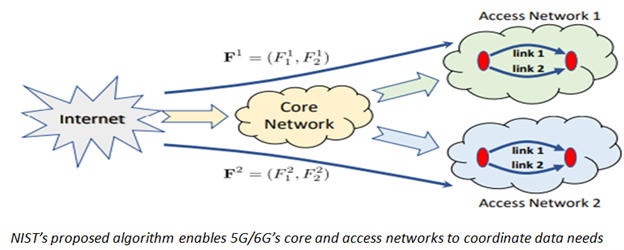
5G and 6G networks will differ greatly in composition and services, compared to one-size-fits-all 4G networks. 5G and 6G networks must provide varying services for such Internet of Things applications as automated manufacturing, vehicle-to-vehicle communications, and remote drone operations – all having differing requirements for data amounts and flow rates. Some of these applications will be very sensitive to data delays.
A significant challenge will be assuring quality of service for user systems at the ends of these networks. NIST researchers have proposed a way to do that in End-to-End Quality-of-Service Assurance with Autonomous Systems: 5G/6G Case Study, published by the IEEE Consumer Communications & Networking Conference.
The paper addresses the problem of managing a 5G/6G network's required data flows to multiple user systems, which can be adversely impacted by random events, such as network congestion. This management is challenged by the limited coordination regarding data flows between the 5G/6G network's subordinate networks which autonomously manage themselves. These are:
- Access networks, which wirelessly connect user systems; and
- Core networks, which coordinate some parts of the access network and connects to the Internet.
NIST researchers have developed a framework, which allows these autonomous, subordinate networks to achieve greater coordination among themselves. Specifically, the framework involves an algorithm that allows the networks to negotiate local, needed data amounts. This algorithm also enables these subordinate networks to exchange their estimates regarding overall, global constraint functions. NIST researchers demonstrated the algorithms using numerical studies.

